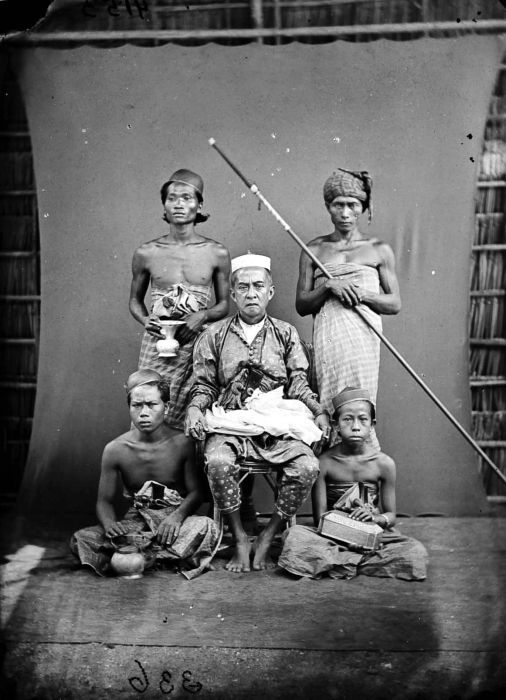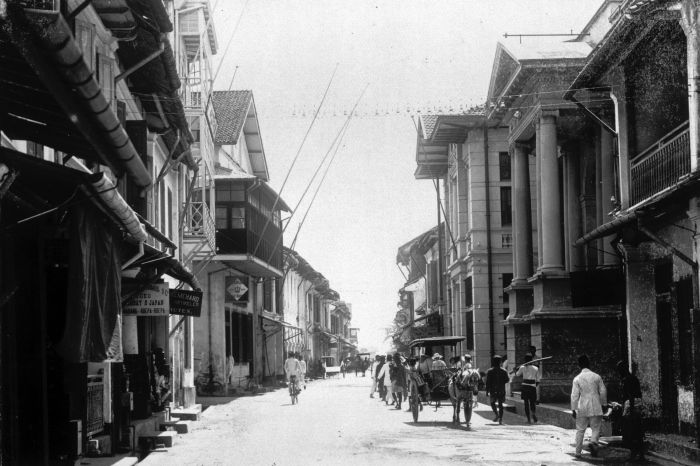|
Maros
Maros is a town in the South Sulawesi province of Indonesia close to the provincial capital of Makassar. It is the capital of the Maros Regency. Maros is the location of the Indonesian Cereals Research Institute, a branch of the Indonesian Agency for Agricultural Research and Development. In 2012, regional cement producer PT Semen Bosowa Maros began construction in Maros of a new clinker plant estimated to cost over $300 million. The clinker plant was expected to help the cement company increase production in the region in response to the growing demand for cement to support construction activities. Maros Water Park is in Maros. Rock art in caves Nearby to Maros, in the area of the Maros Regency to the north of Makassar, are Pettakere cave and other prehistoric cave Caves or caverns are natural voids under the Earth's Planetary surface, surface. Caves often form by the weathering of rock and often extend deep underground. Exogene caves are smaller openings that e ... [...More Info...] [...Related Items...] OR: [Wikipedia] [Google] [Baidu] |
Maros Regency
Maros Regency (, ) is a regency of South Sulawesi province of Indonesia. It covers an area of 1,619.12 sq.km, and had a population of 319,002 at the 2010 CensusBiro Pusat Statistik, Jakarta, 2011. and 391,774 at the Census of 2020.Badan Pusat Statistik, Jakarta, 2021. The official population estimate for mid-2023 was 407,920 according the Province's official estimates but only 389,277 (comprising 195,800 males and 193,477 females) according to the Regency's official estimates.Badan Pusat Statistik, Jakarta, 28 February 2024, ''Kabupaten Maros Dalam Angka 2024'' (Katalog-BPS 1102001.7309) Almost all of the regency lies within the official metropolitan area of the city of Makassar. The administrative centre of the regency is the town of Maros. Administrative division The regency is divided into fourteen districts (), tabulated below with their area and population from the 2010Biro Pusat Statistik, Jakarta, 2011. and the 2020 Census,Badan Pusat Statistik, Jakarta, 2021. together wi ... [...More Info...] [...Related Items...] OR: [Wikipedia] [Google] [Baidu] |
Pettakere Cave
The caves in the Maros-Pangkep karst are situated in South Sulawesi, Indonesia, and contain paintings from the Paleolithic considered to be the earliest figurative art in the world, dated to at least 45,500 years ago. Description The caves in the Maros-Pangkep karst are a cave complex, where prehistoric finds were made. The whole complex is also called "Prehistoric place Leang-Leang"; the name stems from the Makassarese language. The various caves — named Pettae, Jane, Saripa, Jarie, Karrasa, and so on — consist of limestone. They are located from the town of Maros and from the city of Makassar. The entrance to the caves is located above a rice field, accessible by ladder. A hand stencil in the Leang Tempuseng cave was dated to at least 39,900 years old in a 2014 study. The depiction of a babirusa is also located in this cave. It is estimated to be 35,400 years old. The art works were examined with the help of the Uranium-Thorium method of the sintering on the painti ... [...More Info...] [...Related Items...] OR: [Wikipedia] [Google] [Baidu] |
South Sulawesi
South Sulawesi () is a Provinces of Indonesia, province in the South Peninsula, Sulawesi, southern peninsula of Sulawesi, Indonesia. The Selayar Islands archipelago to the south of Sulawesi is also part of the province. The capital and largest city is Makassar. The province is bordered by Central Sulawesi and West Sulawesi to the north, the Gulf of Bone and Southeast Sulawesi to the east, Makassar Strait to the west, and Flores Sea to the south. The 2010 census estimated the population as 8,032,551,Biro Pusat Statistik, Jakarta, 2011. which makes South Sulawesi the most populous province on the island (46% of the population of Sulawesi is in South Sulawesi), and the sixth most populous province in Indonesia. At the 2020 Census, this had risen to 9,073,509,Badan Pusat Statistik, Jakarta, 2021. and the official estimate as of mid-2024 was 9,463,390 (comprising 4,701,970 males and 4,761,410 females).Badan Pusat Statistik, Jakarta, 28 February 2025, ''Provinsi Sulawesi Selatan Dalam A ... [...More Info...] [...Related Items...] OR: [Wikipedia] [Google] [Baidu] |
Makassar
Makassar ( ), formerly Ujung Pandang ( ), is the capital of the Indonesian Provinces of Indonesia, province of South Sulawesi. It is the largest city in the region of Eastern Indonesia and the country's fifth-largest urban center after Jakarta, Surabaya, Medan, and Bandung.Ministry of Internal AffairsRegistration Book for Area Code and Data of 2013 The city is located on the southwest coast of the island of Sulawesi, facing the Makassar Strait. Throughout its history, Makassar has been an important trading port, hosting the center of the Gowa Sultanate and a Portuguese naval base before its conquest by the Dutch East India Company in the 17th century. It remained an important port in the Dutch East Indies, serving Eastern Indonesian regions with Makassarese fishers going as far south as the Australian coast. For a brief period after Independence of Indonesia, Indonesian independence, Makassar became the capital of the State of East Indonesia, during which an Makassar Uprising, u ... [...More Info...] [...Related Items...] OR: [Wikipedia] [Google] [Baidu] |
Maros Water Park
Maros Water Park is one of water park existing in Maros district, South Sulawesi South Sulawesi () is a Provinces of Indonesia, province in the South Peninsula, Sulawesi, southern peninsula of Sulawesi, Indonesia. The Selayar Islands archipelago to the south of Sulawesi is also part of the province. The capital and largest ci ... and was built and ready to soft launch in October 2009. It is planned to be opened in January 2013. It contains outbound area, cottages, restaurant, mini water park, semi olympic pool and body slide. It is surrounded with natural hills, fresh water on site, and with a couple of caves. References {{coord missing, Indonesia Water parks in Indonesia Buildings and structures in South Sulawesi Tourist attractions in South Sulawesi 2009 establishments in Indonesia ... [...More Info...] [...Related Items...] OR: [Wikipedia] [Google] [Baidu] |
Indonesia
Indonesia, officially the Republic of Indonesia, is a country in Southeast Asia and Oceania, between the Indian Ocean, Indian and Pacific Ocean, Pacific oceans. Comprising over List of islands of Indonesia, 17,000 islands, including Sumatra, Java, Sulawesi, and parts of Borneo and New Guinea, Indonesia is the world's largest archipelagic state and the List of countries and dependencies by area, 14th-largest country by area, at . With over 280 million people, Indonesia is the world's List of countries and dependencies by population, fourth-most-populous country and the most populous Islam by country, Muslim-majority country. Java, the world's List of islands by population, most populous island, is home to more than half of the country's population. Indonesia operates as a Presidential system, presidential republic with an elected People's Consultative Assembly, legislature and consists of Provinces of Indonesia, 38 provinces, nine of which have Autonomous administrative divisi ... [...More Info...] [...Related Items...] OR: [Wikipedia] [Google] [Baidu] |
Clinker (cement)
image:LDClinkerScaled.jpg, 200px, Typical clinker nodules image:Hot Clinker 2.jpg, 200px, Hot clinker Cement clinker is a solid material produced in the manufacture of portland cement as an intermediary product. Clinker occurs as lumps or nodules, usually to in diameter. It is produced by sintering (fusing together without melting to the point of liquefaction) limestone and aluminosilicate materials such as clay during the cement kiln stage. Composition and preparation The Portland clinker essentially consists of four minerals: two calcium silicates, alite (Ca3SiO5) and belite (Ca2SiO4), along with tricalcium aluminate (Ca3Al2O6) and calcium aluminoferrite (Ca2(Al,Fe)2O5). These main mineral phases are produced by heating at high temperature clays and limestone. The major raw material for the clinker-making is usually limestone mixed with a second material containing clay as a source of alumino-silicate. An impure limestone containing clay or silicon dioxide (SiO2) can be used. ... [...More Info...] [...Related Items...] OR: [Wikipedia] [Google] [Baidu] |
Prehistoric
Prehistory, also called pre-literary history, is the period of human history between the first known use of stone tools by hominins million years ago and the beginning of recorded history with the invention of writing systems. The use of symbols, marks, and images appears very early among humans, but the earliest known writing systems appeared years ago. It took thousands of years for writing systems to be widely adopted, with writing having spread to almost all cultures by the 19th century. The end of prehistory therefore came at different times in different places, and the term is less often used in discussing societies where prehistory ended relatively recently. It is based on an old conception of history that without written records there could be no history. The most common conception today is that history is based on evidence, however the concept of prehistory hasn't been completely discarded. In the early Bronze Age, Sumer in Mesopotamia, the Indus Valley Civilis ... [...More Info...] [...Related Items...] OR: [Wikipedia] [Google] [Baidu] |
Cave
Caves or caverns are natural voids under the Earth's Planetary surface, surface. Caves often form by the weathering of rock and often extend deep underground. Exogene caves are smaller openings that extend a relatively short distance underground (such as rock shelters). Caves which extend further underground than the opening is wide are called endogene caves. Speleology is the science of exploration and study of all aspects of caves and the cave environment. Visiting or exploring caves for recreation may be called Caving, ''caving'', ''potholing'', or ''spelunking''. Formation types The formation and development of caves is known as ''speleogenesis''; it can occur over the course of millions of years. Caves can range widely in size, and are formed by various geological processes. These may involve a combination of chemical processes, erosion by water, tectonic forces, microorganisms, pressure, and atmospheric influences. Isotopic dating techniques can be applied to cave sedime ... [...More Info...] [...Related Items...] OR: [Wikipedia] [Google] [Baidu] |





